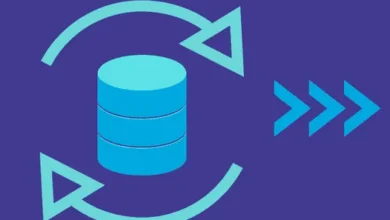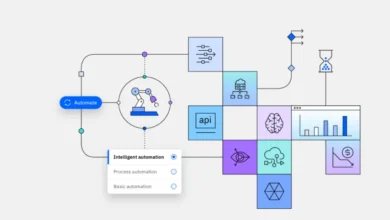How Proxy Services Enhance YouTube Accessibility – Bypassing Geographical Restrictions

YouTube is a prominent platform worldwide, facilitating video sharing and content creation on a massive scale. However, amidst its vast reach, geographical restrictions can pose significant hurdles for users seeking access to desired content.
This limitation arises due to varying licensing agreements and regulatory frameworks across different regions, hindering users from freely enjoying YouTube’s content.
In this context, proxy services emerge as pivotal. These services act as intermediaries, allowing users to bypass geo-blocks and access content that may otherwise be unavailable in their region.
This thesis explores the significance of proxy services in enhancing YouTube accessibility, shedding light on how they enable users to overcome geographical barriers and enjoy a more inclusive viewing experience.
The Basics of Proxy Services
Proxy services facilitate access to restricted content on platforms like YouTube. But what exactly are proxy services? Proxy services are intermediaries between a user’s device and the internet. When users access the internet through a proxy server, their requests are routed through this server before reaching the desired website or online service.
There are several types of proxy servers, each serving different purposes. One common type is a web proxy, which operates through a web browser and allows users to access websites indirectly. Another type is a residential proxy, which routes traffic through real residential IP addresses, making it appear that the user is accessing the internet from a residential location. Additionally, virtual private networks (VPNs) create a secure connection to a private network over the internet, encrypting the user’s internet traffic and masking their IP address.
So, how do proxy services work to mask user location, particularly when it comes to accessing YouTube content? Let’s break it down. When users connect to a proxy server, their internet traffic is rerouted through this server. This means that when they visit YouTube, their IP address appears to be that of the proxy server rather than their actual location. This allows users to bypass geographical restrictions imposed by YouTube based on their physical location.
In the context of YouTube, Croxyproxy for YouTube is an example of a proxy service that specializes in providing access to YouTube content regardless of geographical restrictions. By utilizing proxy servers, Croxyproxy enables users to mask their location and enjoy unrestricted access to YouTube videos, enhancing their viewing experience and ensuring they can access the content they desire, irrespective of their physical location.
Enhancing YouTube Accessibility with Proxy Services
Proxy services play a vital role in overcoming geographical restrictions on YouTube, allowing users to access content that may be restricted in their region. Here’s a step-by-step explanation of how proxy services accomplish this:
- Routing Traffic: When users access YouTube through a proxy server, their internet traffic is redirected through the proxy server instead of directly connecting to YouTube. This initial step ensures that the user’s IP address is masked, making it appear that they are accessing YouTube from a different location.
- Masking IP Address: Proxy servers act as intermediaries between the user’s device and YouTube’s servers. By routing traffic through the proxy server, the user’s actual IP address is concealed, and instead, the IP address of the proxy server is presented to YouTube. This masking of IP addresses helps users bypass the geographical restrictions enforced by YouTube based on their physical location.
- Accessing Restricted Content: With the user’s IP address appearing to originate from a location where the content is not restricted, YouTube grants access to the desired videos or channels. This enables users to enjoy a broader range of content that may not be available in their region due to licensing agreements or regulatory constraints.
The role of proxy servers in providing access to restricted content on YouTube is paramount. These servers serve as intermediaries between users and YouTube’s servers, allowing users to bypass geographical restrictions and access content that would otherwise be inaccessible. Here are a few examples illustrating successful access to geo-restricted content using proxies:
- Example 1: Accessing Region-Locked Music Videos: Users in certain regions may find music videos restricted due to licensing agreements. Using a proxy service, such as Croxyproxy for YouTube, users can change their virtual location to a region where the music video is available, enabling them to watch it without any restrictions.
- Example 2: Watching TV Shows Unavailable in Certain Countries: Television shows and series may be restricted to specific countries due to distribution rights. With a proxy service, users can connect to a server located in a country where the content is accessible, allowing them to stream the show without encountering any geographical limitations.
- Example 3: Accessing Educational Content: In some regions, educational content on YouTube may be restricted due to government regulations or censorship. By utilizing a proxy service, students and educators can circumvent these restrictions and gain access to valuable educational resources worldwide.
In short, proxy services are effective tools for enhancing YouTube accessibility by bypassing geographical restrictions. By using proxy servers, users can mask their IP addresses and access content that would otherwise be unavailable in their region, thus ensuring a more inclusive and enriching viewing experience.
Potential Risks and Drawbacks
While proxy services offer a solution to bypass geographical restrictions on YouTube, it’s essential to consider the potential risks and drawbacks associated with their usage:
- Legal and Ethical Implications: One of the primary concerns associated with using proxy services to access restricted content is the legal and ethical implications. Circumventing geographical restrictions may violate copyright laws or terms of service agreements set by content providers. Users should be aware of the legal consequences of accessing content through unauthorized means and ensure they comply with relevant regulations and agreements.
- Impact on Internet Speed: Another drawback of using proxy services is the potential impact on Internet speed. Since internet traffic is rerouted through intermediary servers, it can lead to slower connection speeds and increased latency. This can result in buffering issues and lower video streaming quality, detracting from the viewing experience.
- Security Risks: Using unreliable proxy services poses security risks to users’ personal data and online privacy. Some proxy servers may log user activity or inject malicious code into web pages, putting users at risk of data breaches or malware infections. Choosing reputable proxy services that prioritize user privacy and security, such as Croxyproxy for YouTube, is crucial to mitigate these risks.
In short, while proxy services offer a way to access geo-restricted content on YouTube, users should be mindful of the potential risks and drawbacks. Legal and ethical considerations, the impact on internet speed, and security risks should be carefully weighed before utilizing proxy services.
Users can minimize these risks by choosing reliable and reputable proxy services, exercising caution when accessing restricted content, and enjoying a more seamless and secure online experience.
>>Also Read About: Huntington Beach SEO Dominators



